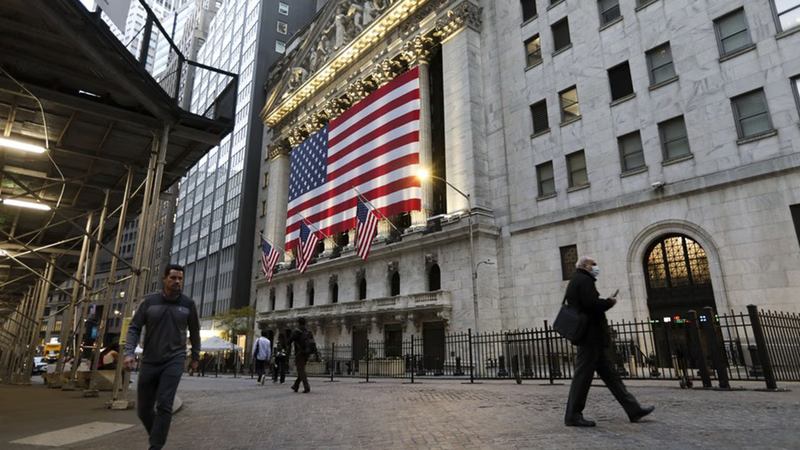
The United States has one of the most developed and intricate financial, monetary, economic, and commercial systems in the world, supported by a stable legal framework and diverse financial institutions. The U.S. banking system is dominated by both federal and state-regulated banks, and its financial system is characterized by a mix of commercial banks, investment banks, credit unions, and other financial institutions. The Federal Reserve, or the \"Fed,\" plays a central role in regulating the U.S. monetary system, setting interest rates, and controlling the money supply to ensure stable economic growth. The U.S. dollar (USD) is the world’s primary reserve currency, which provides the U.S. with a unique influence on global finance and trade.
The American economy is diverse and driven by a mix of industries, including technology, healthcare, manufacturing, agriculture, and finance. The U.S. is both a major importer and exporter, with large trade deficits in certain sectors balanced by trade surpluses in others. As one of the largest consumer markets globally, the U.S. imports goods ranging from electronics to oil, while it exports products like agricultural goods, machinery, and technology. Trade relationships are guided by various policies and agreements, aiming to foster economic collaboration while protecting American industries from unfair competition.
In terms of trade relations with the Middle East and West Asia, the U.S. imports a significant amount of oil and gas from countries in these regions, although its dependency on Middle Eastern oil has decreased due to increased domestic energy production. In exchange, the U.S. exports military equipment, technology, agricultural products, and services to these regions. Trade relations with Middle Eastern countries are also heavily influenced by political factors, including diplomatic alliances, military cooperation, and strategic interests. The U.S. has free trade agreements with some Middle Eastern countries, such as Jordan and Israel, while other partnerships, like those with Saudi Arabia and the UAE, are strengthened through strategic alliances.
The complexity of the U.S. financial and trade system means that businesses looking to engage in this market or engage in exports and imports with the U.S. must navigate a wide range of regulations. Compliance with U.S. trade laws, adherence to customs regulations, and an understanding of tariffs and trade sanctions are crucial for any successful international trade. Additionally, the U.S. places a strong emphasis on anti-money laundering (AML) and counter-terrorist financing (CTF) regulations, particularly in trade with regions considered politically sensitive, like parts of the Middle East.
-
 Michael Murphy 15 months ago
Michael Murphy 15 months ago United States
Garnet sand
United States
Garnet sand
Sand Blasting, CNC high pressure Water Jet Cutting, Water Filtration, Surface Preparation etc.Details
-
 Hussein 3 months ago
Hussein 3 months ago United States
Ruby 100/100
United States
Ruby 100/100
I have a red ruby and want to sell itDetails
-
 Mohamed T 18 months ago
Mohamed T 18 months ago United States
Peppercorn, black pepper, TMT rebar, cement, cloves.
United States
Peppercorn, black pepper, TMT rebar, cement, cloves.
Hello, we are engaged in the export of black pepper, cloves, concrete rebar, as well as cement, agricultural products, vanilla, fats, and paints for h...Details
In a shifting global market landscape, the United States" trade dynamics with West Asia exhibits intriguing patterns worth noting for 2025. The U. S. GDP has seen a marked increase, reaching $27. 72 trillion in 2023, outperforming the global average GDP of $883. 69 billion. This economic expansion correlates with increased domestic credit to the private sector which, at 191. 98% of GDP, significantly surpasses the global average of 67.
07% of GDP. This indicates a robust credit ecosystem that American businesses can leverage when expanding into West Asian markets. The merchandise import value indices for the U. S. have experienced a downturn, with 2023 figures at 94. 1, compared to the global average of 101. 09. This decline could suggest a cooling in import demand or a strategic shift in sourcing.
Conversely, the merchandise export volume indices have revealed resilience, standing at 103. 4, slightly below the global benchmark of 108. 41. This disparity in import and export indices suggests a potential strategic pivot towards higher domestic production or value-added exports. Inflation rates in the United States have stabilized from a peak of 8. 00% in 2022 to 4. 12% in 2023, aligning closely with the global rate of 8. 59%.
This stability supports a favorable investment climate, though the volatility serves as a reminder of the importance of hedging strategies when entering volatile markets like West Asia. For American businesses eyeing expansion into West Asia, these shifts present both challenges and opportunities. The reduction in import values might reflect rising costs or regulatory barriers, while the stable inflation environment could enhance purchasing power and demand for U. S. goods. Aritral. com, an AI-driven B2B platform focusing on commodity and raw material trade, can offer critical market insights and a networking edge by facilitating direct communication and profile management for businesses aiming to navigate these complexities. Creating a business profile on Aritral.
com could be an invaluable step in capitalizing on trade opportunities between the U. S. and West Asia, ensuring successful entry and sustained growth in these markets. "



